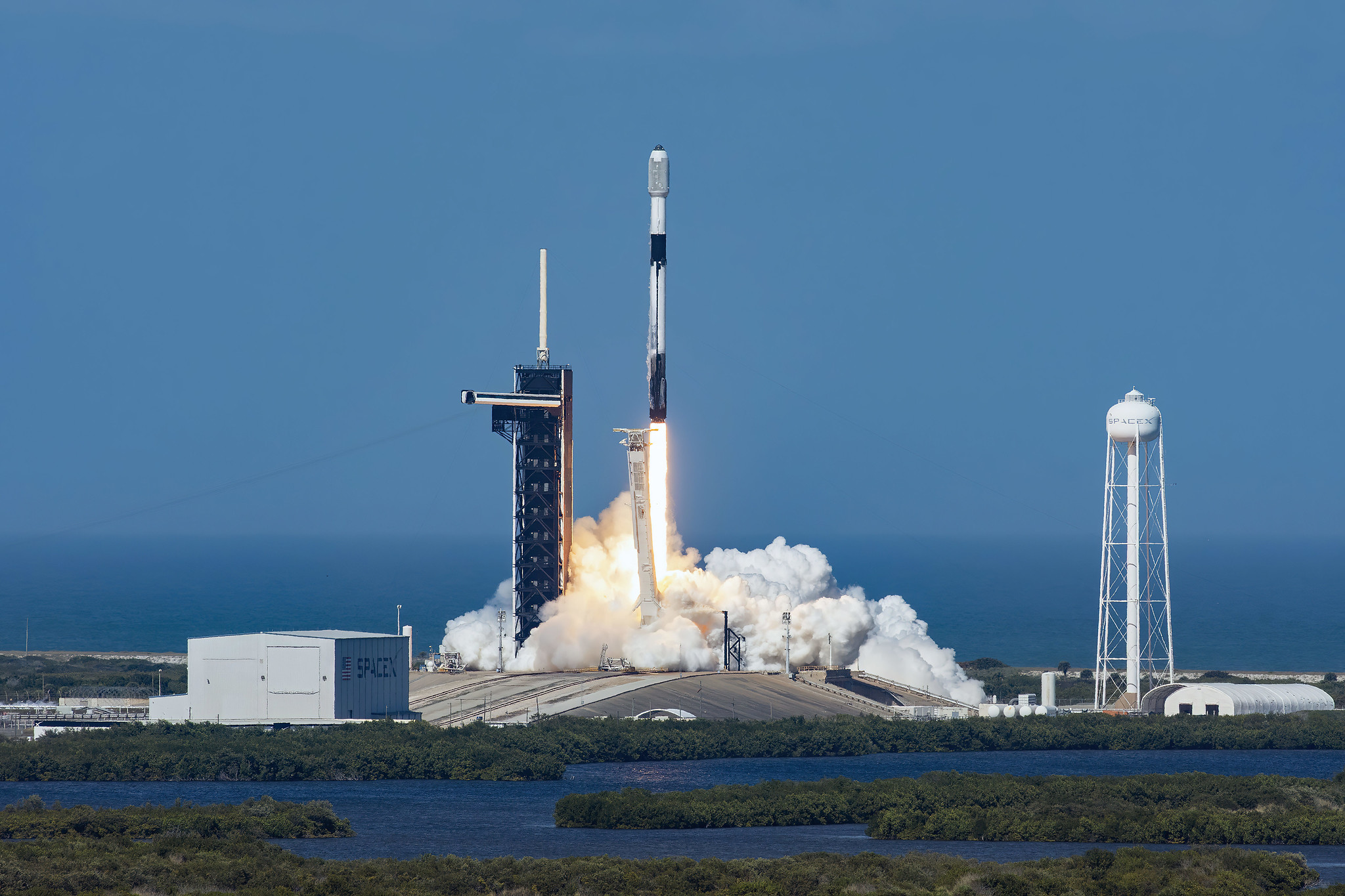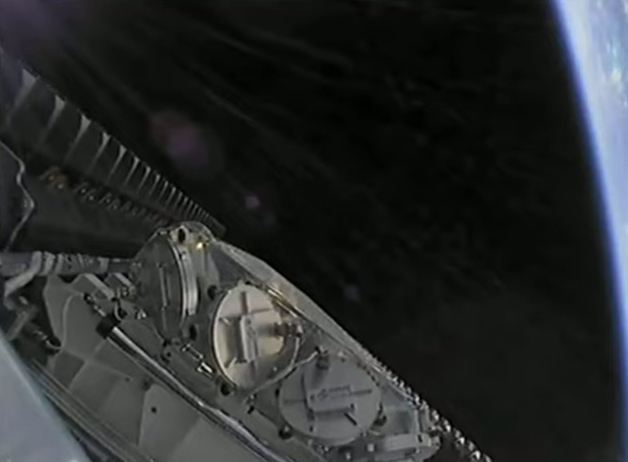SpaceX says a geomagnetic storm just doomed 40 Starlink internet satellites
The satellites launched on Feb. 3, only to be hit by the storm a day later.

SpaceX is in the process of losing up to 40 brand-new Starlink internet satellites due to a geomagnetic storm that struck just a day after the fleet's launch last week.
A SpaceX Falcon 9 rocket launched 49 Starlink satellites on Thursday (Feb. 3) from NASA's historic Pad 39A at the Kennedy Space Center in Florida. A day later, a geomagnetic storm above Earth increased the density of the atmosphere slightly, increasing drag on the satellites and dooming most of them.
"Preliminary analysis show the increased drag at the low altitudes prevented the satellites from leaving safe mode to begin orbit-raising maneuvers, and up to 40 of the satellites will reenter or already have reentered the Earth’s atmosphere," SpaceX wrote in an update Tuesday (Feb. 8).
Related: SpaceX's Starlink satellite megaconstellation launches in photos
Geomagnetic storms occur when intense solar wind near Earth spawns shifting currents and plasmas in Earth's magnetosphere, according to the Space Weather Prediction Center , which is operated by the U.S. National Oceanic and Atmospheric Administration. This interaction can warm Earth's upper atmosphere and increase atmospheric density high enough above the planet to affect satellites in low orbits like SpaceX's new Starlink craft. Friday's geomagnetic storm came on the heels of a sun eruption on Jan. 30 that sent a wave of charged particles toward Earth that was expected to arrive on Feb. 2.
The 49 satellites SpaceX launched last week were deployed in an initial orbit that skimmed as low as 130 miles (210 kilometers) above Earth at its lowest point. SpaceX has said it intentionally releases Starlink batches in a low orbit so that they can be disposed of swiftly in case of a failure just after launch. That orbit design, it turned out, left the fleet vulnerable to Friday's geomagnetic storm.
"In fact, onboard GPS suggests the escalation speed and severity of the storm caused atmospheric drag to increase up to 50 percent higher than during previous launches," SpaceX wrote in its update. The satellites were then placed in a protective "safe mode" and commanded to fly edge-on "like a sheet of paper" to minimize drag effects as the company worked with the U.S. Space Force and the company LeoLabs to track them with ground-based radar, it added.
Get the Space.com Newsletter
Breaking space news, the latest updates on rocket launches, skywatching events and more!

But for most of the new Starlink satellites, the drag was too much. Locked in their safe mode, up to 40 of them were expected to fall out of orbit like space debris just days after their launch.
"The deorbiting satellites pose zero collision risk with other satellites and by design demise upon atmospheric reentry — meaning no orbital debris is created and no satellite parts hit the ground," SpaceX wrote of the satellites' reentry. "This unique situation demonstrates the great lengths the Starlink team has gone to ensure the system is on the leading edge of on-orbit debris mitigation."
SpaceX's Starlink launch last week, called the Starlink 4-7 mission, was the company's third Starlink flight of 2022. The 49 satellites aboard were expected to join more than 1,800 other Starlink satellites currently in orbit. The mission was SpaceX's third launch in four days, following the launch of an Italian Earth-observation satellite on Jan. 31 and another for the U.S. National Reconnaissance Office on Feb. 2.
SpaceX has been launching fleets of Starlink satellites, sometimes up to 60 at a time, since 2019 to build a megaconstellation in orbit that could number up to 42,000 satellites one day. The project is aimed at providing high-speed internet access to customers anywhere on Earth, especially in remote or underserved areas, SpaceX has said.
The Starlink project has come under criticism by astronomers due to the megaconstellation's impact on astronomical observations, since the high number of satellites crossing the night sky can leave streaks in telescope views. Since then, SpaceX has worked to limit the visibility of their Starlink satellites to reduce their impact on the astronomy community.
Email Tariq Malik at tmalik@space.com or follow him @tariqjmalik. Follow us @Spacedotcom, Facebook and Instagram.
Join our Space Forums to keep talking space on the latest missions, night sky and more! And if you have a news tip, correction or comment, let us know at: community@space.com.

Tariq is the Editor-in-Chief of Space.com and joined the team in 2001, first as an intern and staff writer, and later as an editor. He covers human spaceflight, exploration and space science, as well as skywatching and entertainment. He became Space.com's Managing Editor in 2009 and Editor-in-Chief in 2019. Before joining Space.com, Tariq was a staff reporter for The Los Angeles Times covering education and city beats in La Habra, Fullerton and Huntington Beach. In October 2022, Tariq received the Harry Kolcum Award for excellence in space reporting from the National Space Club Florida Committee. He is also an Eagle Scout (yes, he has the Space Exploration merit badge) and went to Space Camp four times as a kid and a fifth time as an adult. He has journalism degrees from the University of Southern California and New York University. You can find Tariq at Space.com and as the co-host to the This Week In Space podcast with space historian Rod Pyle on the TWiT network. To see his latest project, you can follow Tariq on Twitter @tariqjmalik.
